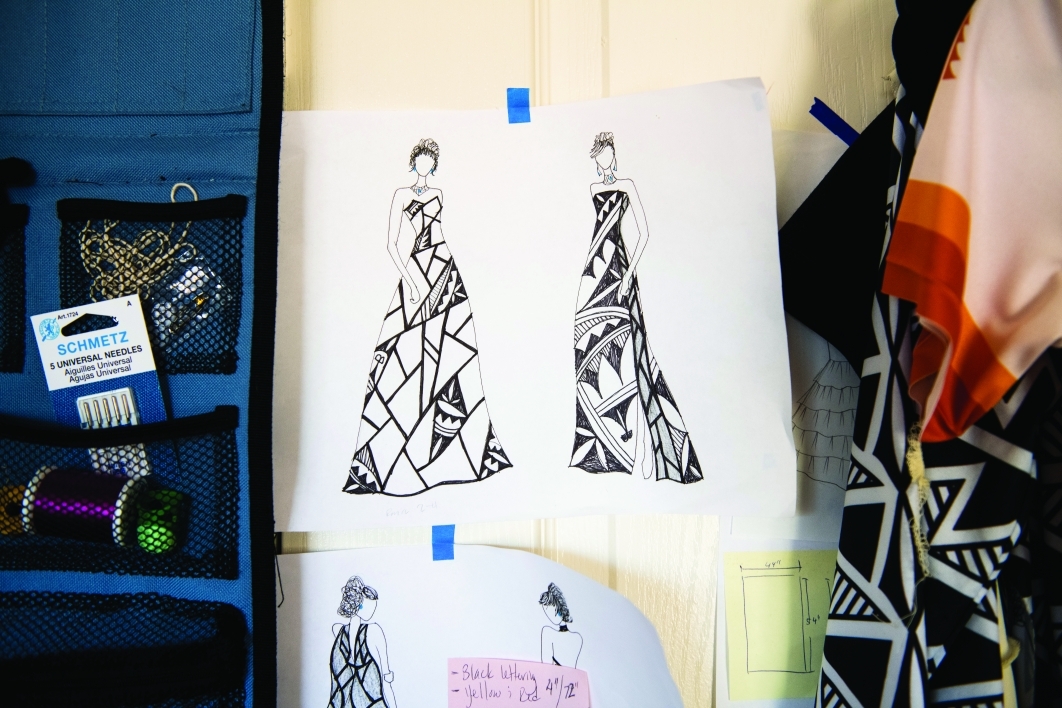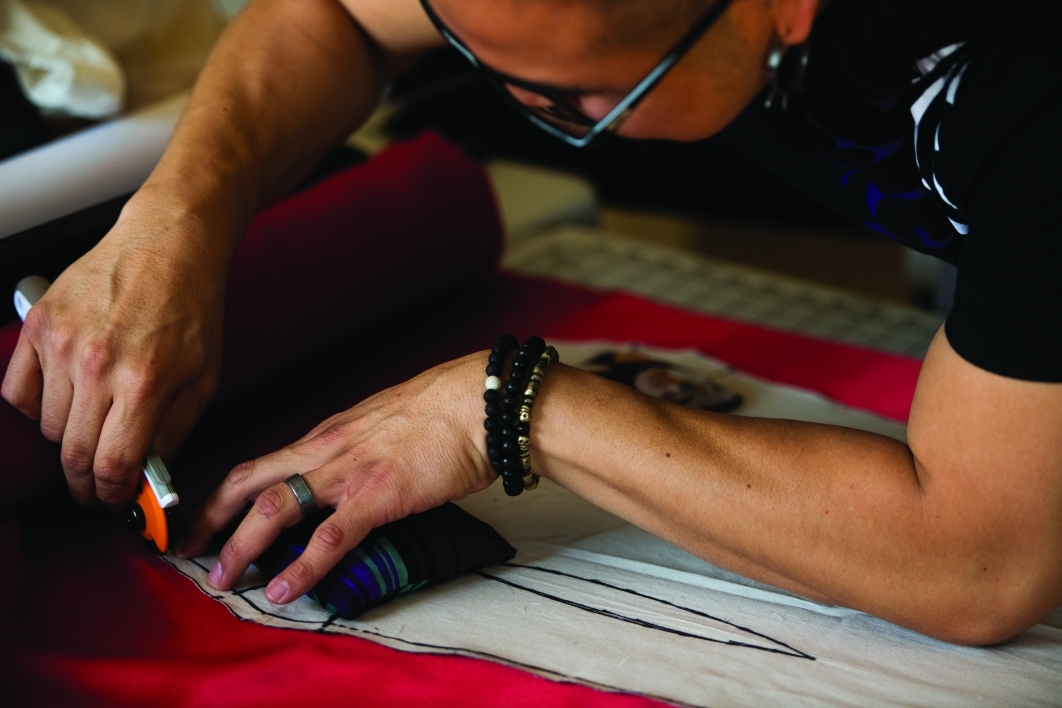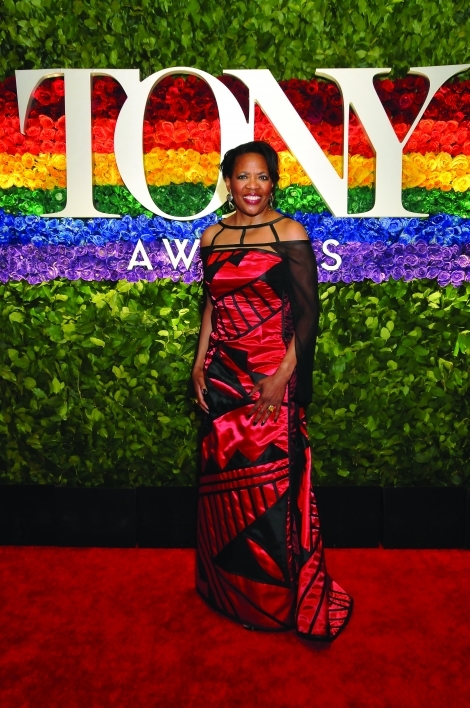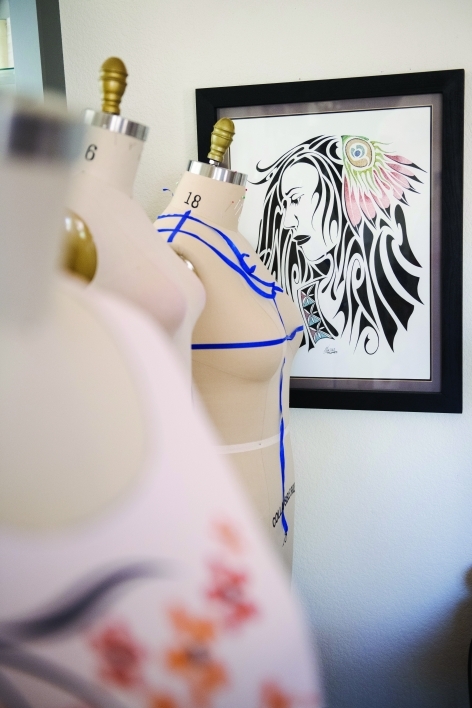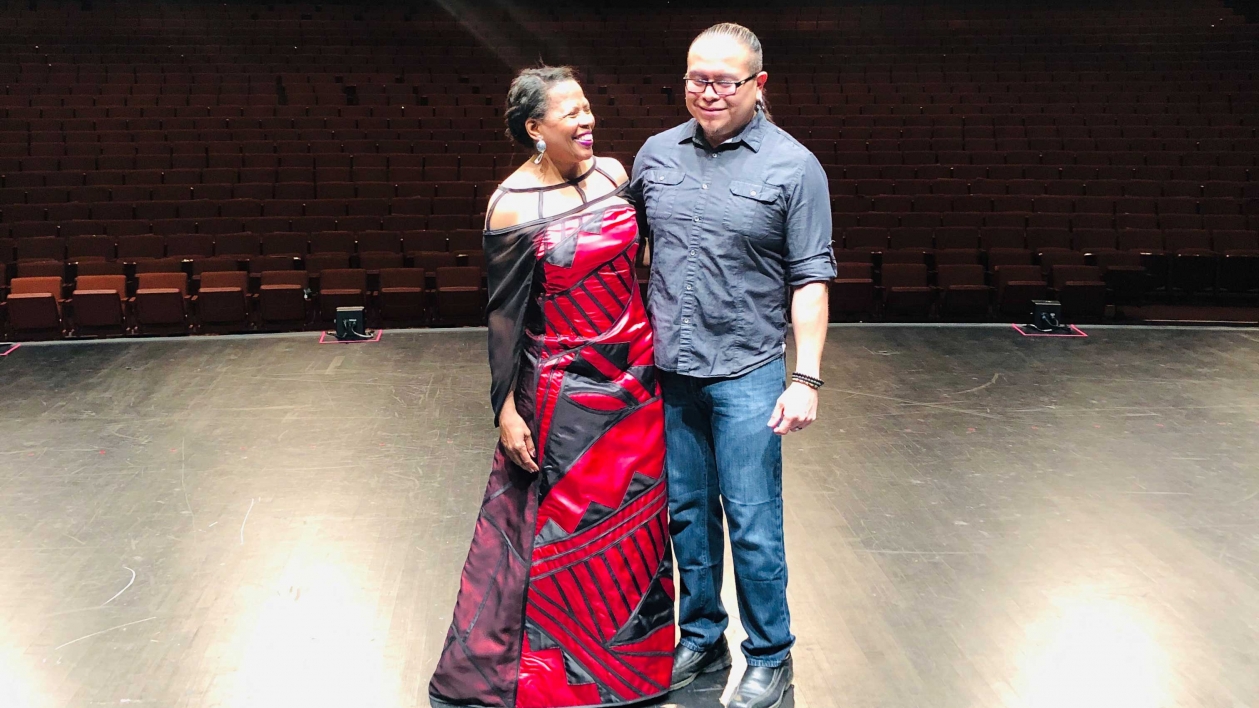Cultural pride by design
ASU engineering alum Loren Aragon once engineered military shock absorbers; now he’s dazzling the fashion world with inventive designs honoring Native American culture
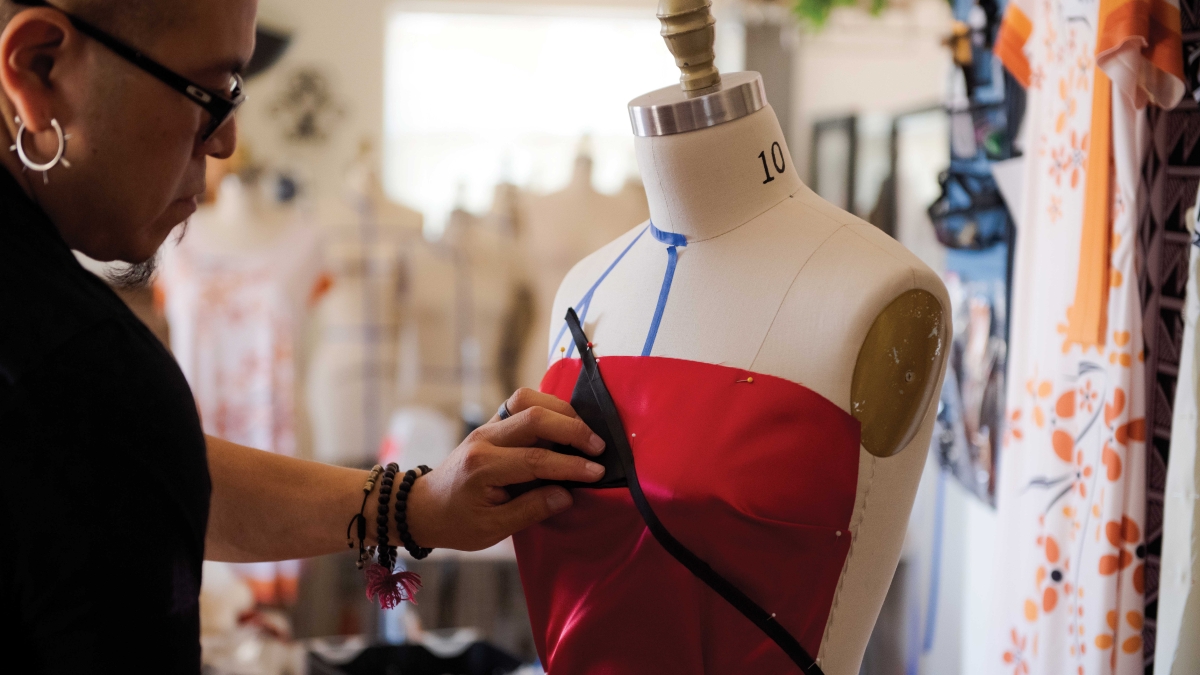
The gowns feature bold, geometric patterns that wrap around the body and turn people into works of art. Look closely at the sharp lines and vibrant colors — the designs mirror those found on pottery from the Acoma Pueblo of New Mexico.
Fashion designer Loren Aragon, ’04 BSE in mechanical engineering, grew up in that pueblo and proudly brings his heritage to life through these creations. And he’s just as proud at being named the 2018 Couture Designer of the Year at Phoenix Fashion Week — the first Native American to receive that honor.
Aragon is the CEO and designer at ACONAV, a Native American couture fashion company based in Phoenix. He launched the company in 2016 with his wife, Valentina, who also attended ASU and hails from the Navajo Nation. The ACONAV (Acoma and Navajo) website describes its designs as celebrating the strength and empowerment of women through positive expressions that tie culture to modern style.
Interestingly, 10 years ago, Aragon was a mechanical engineer designing shock absorbers for military vehicles. And while a student, he studied robotics and designed prosthetics.
“Art and technology have always been in my background,” Aragon said. “I’m intrigued by how things are created. My grandfather was a mechanic who worked with gears and got dirt under his fingernails, and my mother was an artist and art teacher who came from a culture that was very active in pottery art. I’m like a reverse engineer — I research the past to understand how the origin of things affects the world today. My goal is to preserve our culture through fashion design.”
His work is attracting the kind of attention reserved for names on labels featured in chic boutiques. One of Aragon’s unique pottery-inspired couture creations was chosen to be displayed at Walt Disney World’s Epcot Center in Orlando, Florida. His work also turned heads at the 2019 Tony Awards, thanks to a striking gown he designed for Colleen Jennings-Roggensack, vice president of cultural affairs and executive director of ASU Gammage.
Jennings-Roggensack, the only Arizonan eligible to vote for Broadway’s highest awards, wore an eye-catching pattern Aragon calls “shattered details” printed on deep red cloth.
“The geometric pattern of fine-line details suggests the beginning of something new, like clouds breaking to produce rain,” he said. “The color red, like a splash of color through our blood lines, is an homage to my ancestors. Red also represents the missing and murdered indigenous women and girls, and I’m proud to honor them.”
The dress is accented by a cape that functions as a scarf, which is a nod to an accessory girls in the Acoma Pueblo wear to symbolize that they’ve become women. Plus, the cape playfully suggests a superhero, Aragon adds.
“Our culture is based on a matrilineal system that honors the power and strength of women,” he said. “We celebrate that women create life, and I emphasize that fact in my designs, that we look up to women.”
Jennings-Roggensack, who makes a point to always wear a gown to the Tonys that was created by an Arizona designer, says what impressed her about Aragon was he took time to get to know her before sitting down to the drawing board.
“I admired that he wanted to know who I was as a person,” she said. “Later, when he showed me the design, I immediately fell in love with it. It had a vertical feel that sweeps you upward. I would love to wear his other designs.”
After traveling to Santa Fe to explore Native artists’ work for inclusion in Disney’s Epcot Center, Jackie Herrera, assistant producer for Walt Disney Imagineering, chose to showcase Aragon in the Creating Tradition Exhibit of the American Heritage Gallery. The exhibit focuses on contemporary artists who use historical artifacts as inspiration for their work.
“I thought Loren’s work was very inspired, and asked him to design a dress based on one of the pots the museum owned,” Herrera said. “The dress he made is beautiful. It’s truly art, which is a word not usually used to describe fashion.”
Aragon admits it was “a big surprise” to be asked to contribute work to the Epcot exhibit. After researching the tradition behind the creation on that specific piece of pottery, he decided to marry Acoma’s matriarchal culture with Disney’s princess culture, and create something that could be worn by Cinderella, Belle (“Beauty and the Beast”) or any Disney heroine.
“I listened to the voice of the past to create something that echoes into today,” Aragon said.
The list of influences stretches throughout his life. His first mentors were his mother, Hilda, a seamstress and an artist, and his uncle, Joseph Salvador, a metalsmith who taught him jewelry making and how to use his artistic skills to create pieces that celebrate the vitality in the Native way of life.
He also credits Thomas Sugar, a professor at ASU’s Ira A. Fulton Schools of Engineering, for teaching how mechanical designs drawn on paper could be brought to life. Sugar remembers Aragon as “a very project-focused person. Loren took his creativity and problem-solving skills and today has created some beautifully designed clothes.”
Reflecting on his time at ASU, Aragon recalls designing jewelry and greeting cards to help pay for school.
“When I came to ASU,” he said, “I was an only child who felt sheltered, and school helped me gain the confidence to open my eyes to a different world and appreciate my culture more. It gave me confidence in what I was doing.”
What’s next for Aragon?
“I’m previewing designs inspired by rain,” he said. “Rain is the Pueblo culture’s source of life. Our ancestors prayed for rain, and my new collection will honor the sky, cloud formations and lightning.”
Written by Benjamin Gleisser, who has profiled Dick Clark, Michael Jordan, Oliver Platt and other entertainment newsmakers for publications worldwide. This story originally appeared in the fall 2019 issue of ASU Thrive magazine.
Top photo: Loren Aragon's gowns feature bold, geometric patterns that wrap around the body and turn people into works of art. The designs mirror those found on pottery from the Acoma Pueblo of New Mexico. Photo by Jarod Opperman/ASU
More Science and technology

The science behind chronic stress
Stress comes in many shapes and sizes. There’s the everyday stress of preparing for a final exam or being stuck in traffic. And the more significant stress of losing a friend, family member,…

ASU planetary scientist to be inducted into the National Academy of Sciences
The National Academy of Sciences is inducting School of Earth and Space Exploration Director Meenakshi Wadhwa into the 2023 class of new members for her pioneering work in planetary sciences and…

Unlocking the potential of AI for homeland security
“Can we do what we're doing now cheaper, more efficiently, more effectively?” Adam Cox, director in the Office of Strategy and Policy at the Department of Homeland Security Science and Technology…
